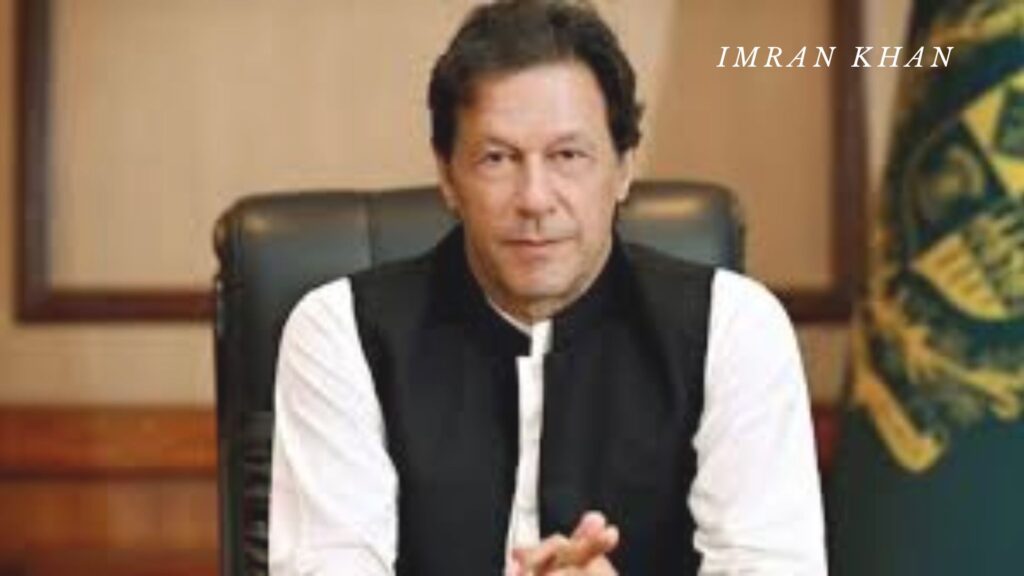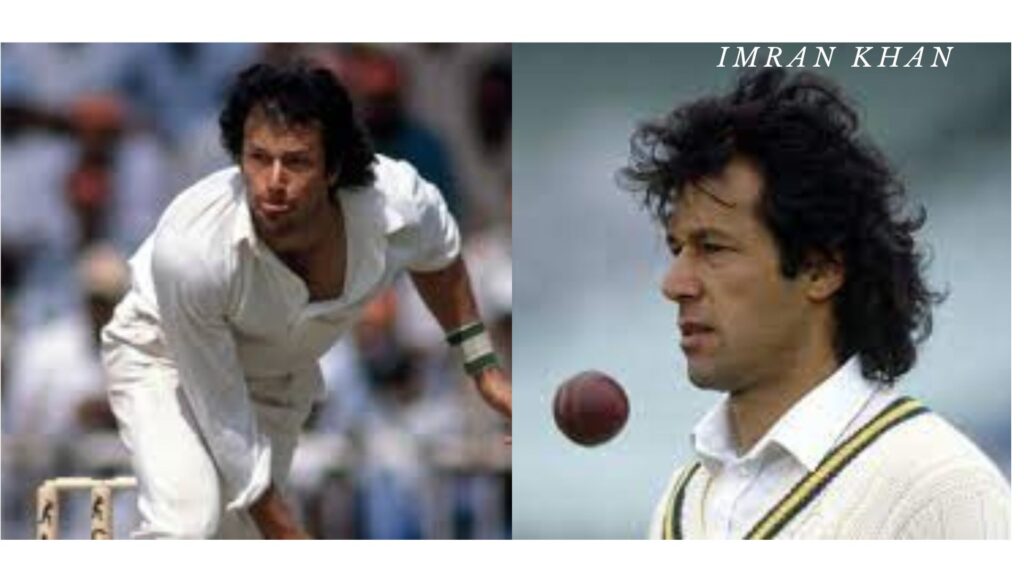Imran Khan Biography 1
Imrān Khan (born 5 October 1952) is a Pakistani statesman and former cricket skipper who was the 22nd Prime Minister of Pakistan from August 2018 to April 2022, when he was removed by means of a no-confidence vote in the National Assembly. He is the originator and chair of Pakistan Tehreek-e-Insaf (PTI).
Born to a Pashtun family of Niazi origin in Lahore, Khan graduated from Keble College, University of Oxford, England, in 1975. He began his international cricketing career at 18, in a 1971 Test series against England. He was deemed one of cricket’s greatest all-rounders and was inducted into the ICC Cricket Hall of Fame. Khan took part in the sport until 1992 and was the team’s captain intermittently between 1982 and 1992.
He was also responsible for leading Pakistan to its first and only victory in the 1992 Cricket World Cup. Outside of sports, Khan founded a number of cancer hospitals in Lahore and Peshawar, as well as Namal College in Mianwali. He then embarked on a career in politics, founding the PTI in 1996.
He was voted into the National Assembly in the 2002 general election, and acted as an opposition member from Mianwali until 2007. PTI opted to boycott the 2008 general election, but gained the second-largest number of votes in the 2013 general election.
Khan’s populist platform won the PTI the highest number of seats in the National Assembly in the 2018 general election, subsequently leading to the formation of a coalition government with independents and Khan as Prime Minister.
Prime Minister Khan took action to address Pakistan’s balance of payments crisis by receiving bailouts from the International Monetary Fund. As a result, the country saw a decrease in its current account deficit and limited defence spending, leading to some economic growth.
His government also increased tax collection and investment and launched the Ehsaas Programme and the Plant for Pakistan initiative to promote renewable energy and expand protected areas.
However, Khan’s time in office was not without controversy. He was accused of political victimisation and clamping down on freedom of expression and dissent, and the perception of corruption in the country worsened. In April 2022, he was removed from office through a no-confidence motion and charged under anti-terror laws in August. He survived an assassination attempt in November.

Imran Khan Early Life and Family
Khan was brought into the world in Lahore on 5 October 1952. A few reports propose he was conceived on 25 November 1952. It was accounted for that 25 November was inaccurately said by Pakistan Cricket Board authorities on his identification.failed verification] He is the main child of Ikramullah Khan Niazi, a structural specialist, and his better half Shaukat Khanum, and has four sisters.
Long settled in Mianwali in northwestern Punjab, his paternal family are of Pashtun ethnicity and have a place with the Niazi tribe, and one of his precursors, Haibat Khan Niazi, in the sixteenth century, “was one of Sher Shah Suri’s driving generals, just as being the governor of Punjab. Like his dad, Khan’s mom was an ethnic Pashtun, who had a place with the Burki tribe and whose progenitors had been settled in the Jalandhar area of Punjab for quite a long time. Following the production of Pakistan, she moved to Lahore with the remainder of Khan’s maternal relatives.
Khan’s maternal family has delivered a few cricketers, including those who have spoken to Pakistan, for example, his second cousins Javed Burki and Majid Khan. Maternally, Khan is additionally a beneficiary of the Sufi warrior-writer and maker of the Pashto alphabet, Pir Roshan, who hailed from his maternal family’s hereditary Kaniguram town situated in South Waziristan in the tribal territories of northwest PakistanHis maternal family was situated in Basti Danishmanda, Jalandhar, India for around 600 years.foreign relations.
Growing up with his sisters in a comfortable, upper middle-class home, Khan was a quiet and shy boy. He attended Aitchison College and Cathedral School in Lahore before moving to England’s Royal Grammar School Worcester, where he demonstrated a talent for cricket. In 1972, he enrolled at Oxford’s Keble College to study Philosophy, Politics and Economics, graduating in 1975. Paul Hayes, an enthusiast for college cricket at Keble, played an important role in securing Khan’s admission after Cambridge had turned him away.

Imran Khan Cricket Career (Imran Khan Biography 1)
He engaged in English county cricket from 1971 to 1976 for Worcestershire. During this decade, other teams represented by Khan incorporated Dawood Industries (1975–1976) and Pakistan International Airlines (1975–1976 to 1980–1981). From 1983 to 1988, he took part for Sussex.
The legendary Shoaib Khan made his international cricket debut in 1971, kicking off his illustrious career. Three years later, he played his first One Day International match against England. After graduating from Oxford and finishing his tenure at Worcestershire, he returned to Pakistan in 1976 to secure a permanent place in the national team, who played against New Zealand and Australia in the 1976-1977 season.
Khan quickly established himself as one of the most talented bowlers in the world, coming in third place in a fast bowling competition at Perth in 1978. He was also one of the pioneers of reverse swing bowling technique, which he imparted to Wasim Akram and Waqar Younis, who went on to master and popularize it.
As a bowler, Imran Khan initially bowled with a fairly chest-on action, at medium-pace. However, he worked diligently to change his action to a more classical type, and to build his body to be able to bowl quickly. Khan reached his peak as a fast bowler from January 1980 to 1988 when he became a pure fast bowler. During this period Imran picked up 236 test wickets at an average of 17.77, with 18 five-wicket hauls and 5 10 wicket hauls.
His bowling average and strike rate were better than those of Richard Hadlee (19.03), Malcolm Marshall (20.20), Dennis Lillee (24.07), Joel Garner (20.62) and Michael Holding (23.68). In January 1983, playing against India, he obtained a Test bowling rating of 922 points. Although calculated retrospectively (International Cricket Council (ICC) player ratings did not exist at the time), Khan’s form and performance during this period places him third in the ICC’s All-Time Test Bowling Rankings.
Khan accomplished the triple of a complete all-rounder (getting 3000 runs and 300 wickets) in 75 Tests, the second-fastest record behind Ian Botham’s 72. He additionally has the second-highest all-time batting normal of 61.86 for a Test batsman playing at position 6 in the batting request.
He played his last Test coordinate for Pakistan in January 1992, against Sri Lanka at Faisalabad. Khan resigned always from cricket six months after his last ODI, the memorable 1992 World Cup last against England in Melbourne, Australia. He finished his profession with 88 Test matches, 126 innings and scored 3807 runs at a normal of 37.69, including six centuries and 18 fifties.
His most noteworthy score was 136. As a bowler, he took 362 wickets in Test cricket, which made him the main Pakistani and world’s fourth bowler to do as such. In ODIs, he played 175 matches and scored 3709 runs at a normal of 33.41. His most noteworthy score was 102 not out. His best ODI bowling was 6 wickets for 14 runs, a record for the best bowling figures by any bowler in an ODI innings in a losing reason.
In 1982, Imran Khan, the thirty-year-old cricketer, became captain of the Pakistan cricket team, succeeding Javed Miandad. During his captaincy, he played 48 Test matches, 14 of which were won by Pakistan, 8 were lost and the remaining 26 were drawn. Khan also played 139 ODIs, with 77 victories, 57 defeats and one tie.
In his first year as captain, Imran Khan led his team to their first Test win on English soil in 28 years at Lord’s. His performance as a fast bowler and an all-rounder was at its peak as he took 8 wickets for 58 runs against Sri Lanka at Lahore in 1981–1982, and topped both the bowling and batting averages in the three-Test series against England in 1982.
His career-best performance came in a home series against India in 1982–1983, where he took 40 wickets in six Tests at an average of 13.95. By the end of that series, Khan had taken 88 wickets in 13 Test matches. Unfortunately, the series also resulted in a stress fracture in his shin that kept him out of cricket for more than two years. A successful treatment funded by the Pakistani government eventually enabled him to make a comeback in the 1984–1985 season.
In 1987, under Khan’s leadership, Pakistan earned its first-ever Test series win and followed it up with a historic series victory in England. During the same decade, Khan’s team also garnered three commendable draws against the West Indies. India and Pakistan co-hosted the 1987 Cricket World Cup, but neither could reach the finals.
Khan retired from international cricket at the end of the World Cup but was asked to return to the captaincy by the President of Pakistan in 1988. On his return, Khan led Pakistan to another successful tour of the West Indies, and he was awarded Man of the Series for taking 23 wickets in three Tests.
Khan’s biggest achievement as a captain and cricketer came in 1992 when he steered Pakistan to a Cricket World Cup victory. At the age of 39, he even took the winning last wicket himself.Read More
1 thought on “Imran Khan Biography 1”